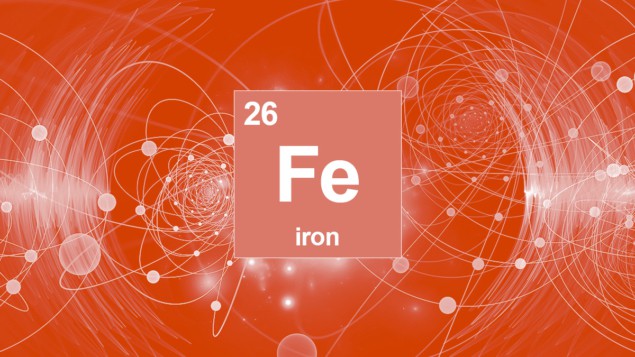Which is your favourite chemical element? To mark the International Year of the Periodic Table, our science journalists will be arguing for their pick from the 118 known elements. In this instalment, Hamish Johnston highlights the role that iron has played in improving the humble plough and allowing the Burj Khalifa to touch the sky.

Humanity’s love affair with my favourite element began about 3000 years ago at the dawn of the Iron Age. That is when humans worked-out how to make iron tools and weapons that were superior to those made of bronze. Iron ploughs, for example, where much better than their wooden or bronze counterparts, making agriculture more efficient and allowing it to become more widespread.
By adding a small amount of carbon to iron, cast iron and steel could be made. These two materials were the backbone of the industrial revolution, which changed civilization forever.
In the early 20th century steel allowed us to build up into the sky and today the world’s tallest building – the Burj Khalifa in Dubai – is an astonishing 828 m tall.
While plastics and other materials have begun to supplant iron for many uses, steel will remain an important material in the foreseeable future.
Iron is also the eponymous ferromagnet and in 1928 Fritz Pfleumer coated a paper strip with an iron compound and created the first magnetic recording tape. Four decades later the Beatles created masterpieces such as Revolver and Sgt. Pepper’s Lonely Hearts Club Band using tape loops and other clever manipulation of this medium.

Battle of the elements: nitrogen gives life and takes it away
In 1979, the Sony Walkman tape player started a phenomenon that is all too familiar today – people wandering around with headphones on listening to their own personal selection of music. Magnetic tape allowed us to record our favourite television programmes and was also used to store data for the first home computers – so iron helped usher in the digital age.
There are of course other ferromagnets – anyone around in the 1980s remembers the “chrome” cassette tapes that were supposed to be of better quality than iron-based ones.
I suppose I have a soft-spot for iron because I studied magnetic materials as a PhD student many years ago. It was then that I was very surprised to discover that despite being the most familiar of ferromagnets, physicists still do not have a very good understanding of why iron is magnetic. I was reminded of this by the Canadian physicist Michael Steinitz, who responded to our call for nominations of a favourite element (see box below). He picked chromium in part because “it is the only element for which we have a fundamental explanation of the reason for its magnetic order”.
And now for my killer argument. There would probably be no life as we know it on Earth if it were not for the convection currents in our planet’s molten iron core. These generate Earth’s magnetic field, which stops the atmosphere from being stripped away by the solar wind and cosmic rays.
What’s your favourite element? Contact us at pwld@ioppublishing.org with your pick – and the reason why – or via Twitter using the hashtag #battleofelements.



